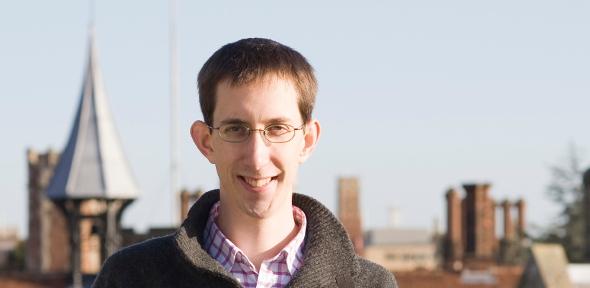
Tore Butlin has recently been awarded a Royal Academy of Engineering / EPSRC Research Fellowship to work on 'Modelling the vibration of complex structures with localised non-linearities'. The project will be in collaboration with the Bristol Laboratory for Advanced Dynamics Engineering and the Structural Dynamics and Vibration Laboratory at McGill University, Montreal.
There is a huge need for efficient and practical tools for predicting vibration in complex structures, from automotive brakes to oilwell drills. A host of simplified methods exist for studying linear systems (usually valid when the motion of the structure is sufficiently small), but linear theory can only go so far. Real structures often have regions that are significantly non-linear, such as friction forces, requiring less efficient methods of computer simulation to investigate. This is a problem that is exaggerated when trying to account for variations and uncertainties such as those resulting from a production line.
The aim of this research is to find ways of modelling non-linear behaviour efficiently by exploiting the fact that many examples of non-linearity occur in localised regions of the structure. This allows computational effort to be focussed on these regions while retaining the efficiency of linear analysis for the majority of the structure. A core objective of the research is practical relevance. Therefore the new methods developed will be assessed against experiments designed to exemplify the key features of complex structures with localised non-linearities that make their study traditionally difficult.
The benefits of a successful approach have the potential to impact a wide range of areas such as brake noise, drilling and machining, turbine blade vibration, offshore structures, MEMS devices and 'buzz, squeak and rattle' within the automotive industry, and potentially within medical contexts such as drilling in orthopaedic surgery and understanding tinnitus (spontaneous vibration in the cochlea). Such goals are long-term and require expertise in other fields. The role of this research is to develop novel tools that may open new opportunities for research in these areas.

